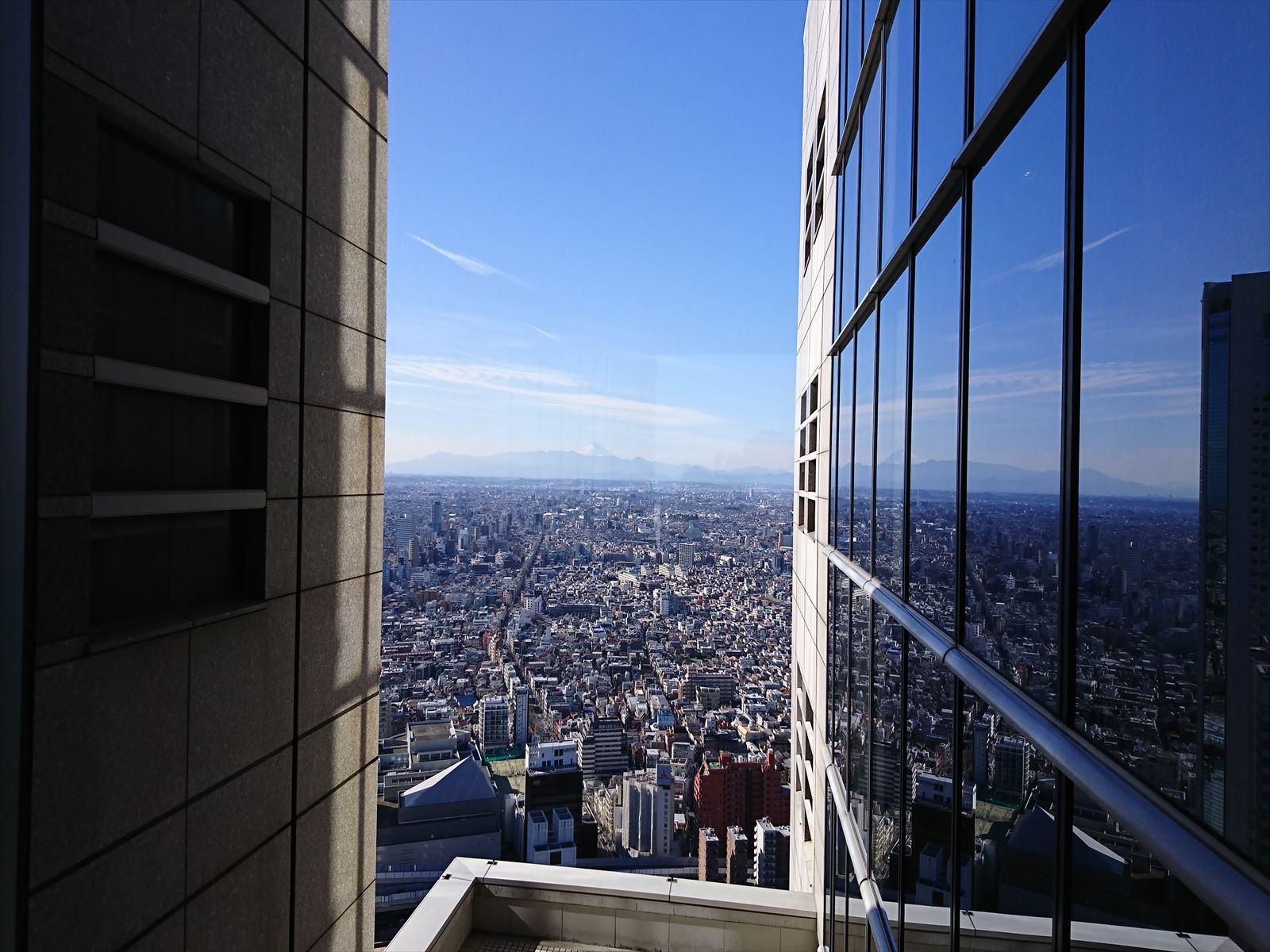リスク対応策 2020.03.02
RM 20 南海トラフ巨大地震 Nankai Trough Giant Earthquake
For those who prefer to read this column in English, the Japanese text is followed by a British English translation, so please scroll down to the bottom of the Japanese text.
気象庁のホームページには、
「南海トラフ地震は、駿河湾から日向灘沖にかけてのプレート境界を震源域として概ね100~150年間隔で繰り返し発生してきた大規模地震です。前回の南海トラフ地震(昭和東南海地震(1944年)及び昭和南海地震(1946年))が発生してから70年以上が経過した現在では、次の南海トラフ地震発生の切迫性が高まってきています」
とある。

1.未知の南海トラフ地震の痕跡発見
昨年、2019年11月、近い将来の発生が懸念される南海トラフ地震の想定震源域の東側で、「7世紀末に未知の南海トラフ地震が発生していた痕跡」を産業技術総合研究所などの研究チームが発見、想定震源域の西側では684年に南海地震の「白鳳(はくほう)地震」が起きており、東西で連動した巨大地震だった可能性があるとの報道が駆け巡った。
1944(昭和19)年12月7日に発生、東海地方に大きな被害をもたらした「昭和東南海地震」。しかし、戦時中のため報道されることはなかった。以前から「震度7相当の地域がある」と推定はされていたが、昨年2019年末、この地震による各地の震度分布を名古屋大のチームが再評価した結果、「愛知県の西尾市、静岡県の菊川市と袋井市の3カ所が『震度7』であり、揺れが大きかった地域は(今後の大地震への)注意が必要だ」との報道がなされたのである。
南海トラフ地震の想定震源域は、3つに分かれていて、静岡地方を想定震源域とする地震が「東海地震」であり、愛知、三重、和歌山を想定する地震が「東南海地震」、その以西宮崎沖まで伸びる想定震源域を持つ地震が「南海地震」である。時間差があっても、これら3つの震源域が連動する可能性が高いと言われており、「東日本大震災を遙かに凌ぐ、超巨大震災になる」と予測されている。
気象庁のホームページの「南海トラフ地震について」に、その詳細が記されている。以前、内閣府は「南海トラフ巨大地震の被害想定」について、揺れが最大になる場合には、震度6強以上のエリアが太平洋岸に広範に広がり、「死者は32万人を超え、経済被害も220兆円を超える」との想定をしていた。しかし、2019年5月、このうち死者の想定数を23万人強に引き下げた、理由としては「東日本大震災の後に住民の津波避難の意識が向上したことが影響した」と述べたが、「今後の調査結果によっては再び想定が増えることもある」とも付言している。
従来の地震の被害想定では、「揺れによる物的損害」が最も重視されていたが、東日本大震災の津波被害の巨大さから、南海トラフ地震対策として種々の「津波対策」の手が打たれている。ただ、これらは、あくまでも「人命救助によって、被害者の数を減らすことが最優先された対策」であり、経済対策の点では保険を含めて、十分な対応がなされているとは言い難い状況である。
2.損害保険会社の災害準備金
以前は、7~8千億円の規模で推移していた、日本の大手3メガ損保の災害準備金の額が、2019年3月期末に5383億円に減少、さらに「2020年3月期末には約3850億円に減る見通し」が2019年11月末報道された。背景としては、このところの台風等の災害にかかわる保険金支払いが、毎年非常に高い水準となっているためとのことである。
災害保険金の支払い金額は、損害保険業界全体で、従来の倍の水準を推移するようになり、2018年度には1.5兆円を超え、2019年度の支払い確定額も最終的には1兆円に達する見通しである。「大災害が起きたときに、損害保険会社の経営は果たして大丈夫なのか」と懸念する声もあるが、「保険会社のリスクヘッジために掛ける再保険の手配を十分おこなっている」のでその心配は無いと言ってもいい。
しかし、このような「災害保険金の支払いの増加」という背景によって、この災害リスクを海外の保険会社リスク移転する手段である「再保険」の前途も厳しい状況となっているのである。日本損害保険協会によると、2019年3月期に海外を中心とする再保険会社から損害保険会社に支払われた再保険金の額は、前年度の2.5倍、1兆1740億円に達した。この結果、自然災害に関する日本の損害保険会社の再保険料は、「2019年4月期には2割~3割上昇したが、2020年4月期には50%もしくはそれ以上上昇する可能性がある」と欧米の保険専門誌は予測している。
この再保険料の上昇、また2019年秋甚大な被害を及ぼした台風15号、19号の保険金支払い、これらの結果、今後の保険料の値上げは必至であり、このまま災害が続けば、2021年以降もさらなる値上げが避けられそうにない状況である。保険契約者に負担増を求め続けるのも限界があるため、国際的にさらにリスクを分散するリスクマネジメントが損害保険会社に求められる可能性も否定できない状況となってきている。

3.「地震保険」の現況
日本政府が再保険を引き受け、最終的に地震リスクを補償する「地震保険」の対象は、あくまでも「居住用の建物とそのなかにある家財」であり、企業の所有する建物や財産にこの政府が最終引き受け者となる「地震保険」を掛けることはできない。首都圏直下型の大地震で経済的な損失は100兆円にのぼるとの被害予想が出され、前述の通り、南海トラフ巨大地震による経済的な損失額はその2倍、200兆円に及ぶとの被害想定がなされている。
しかし、個人をメインとする「居住用の建物とそのなかにある家財」を対象にした地震保険の「支払い準備金の額」は、「地震再保険特別会計で定められているが、「1回の地震等により政府が支払うべき再保険金の総額は、現在11兆5,662億円であり、民間保険責任額と合計しても、1回の地震等による保険金の総支払限度額は11.7兆円」となっている。これでは十分とは言えないであろう、しかし、日本国家予算そのものが100兆円規模である、それを超える損害に対しては国を挙げても補償をおこなうことは不可能である。
まして、その「地震保険」の対象になっていない「企業、団体の財産にかかわる地震保険」は全くリスクヘッジの手が打たれていない「リスクに対して丸裸の状態」と言えよう。そのなかでも、八方手を尽くして一部の企業では日本の損害保険会社と交渉して、「企業用の火災保険に地震危険補償特約を付帯したもの」を購入、「地震リスク」への備えとしている企業もある、しかし、その補償額は十分なものとは言えないようである。
4.企業がなすべき地震リスクに関するリスクマネジメントは
このように、巨大地震に備える手段は金額的には日本国内には存在しないと言っても過言ではない状態である。そうであれば、目を海外へ転じて、海外のサポートを得る「自社の地震リスクを補償する自前の手段を構築する」しかないであろう。その手段こそ「キャプティブ」であり、「企業として、地震リスクに十分備える」ためには、このキャプティブによって、「海外に存在する日本の地震リスクを補償する枠を確保すること」しかないといえよう。そうでなくては、「地震が来ないことをただ祈るしか」、手段は無い状況だからである。
今回のまとめ
国難とも言える巨大地震に備えるか、それとも「起きた時にはしようがない」と黙って何もせず見過ごしていくのか、その決断をするにはあまりにも時間がない。
国が、「巨大地震が30年以内に70~80%の確率で起きる」と公的に発言していることに何も対応しないことは、果たして「コーポレートガバナンス」のうえからどうステークホルダーには見られるのであろうか。欧米なら、間違いなく「社外取締役が率先して動くタイミング」と言えよう。
執筆・翻訳者:羽谷 信一郎
English Translation
Risk Management 20 – Nankai Trough Giant Earthquake
The Japan Meteorological Agency (JMA) website states.
The Nankai (southern sea) Trough earthquake is a large-scale earthquake that has occurred repeatedly at intervals of 100 to 150 years, with its epicenter located at the plate boundary between Suruga Bay and the coast of the Hyuga Sea. More than 70 years have passed since the last two Nankai Trough earthquakes, the Showa Tonankai (southeast sea) (1944) and the Showa Nankai (1946) earthquakes, and the imminence of the next Nankai Trough earthquake has increased.
1. The discovery of traces of the unknown Nankai Trough earthquake
Last year, in November 2019, a team of researchers from the National Institute of Advanced Industrial Science and Technology (AIST) and others discovered “traces of an unknown Nankai Trough earthquake at the end of the 7th century” east of the hypothetical epicenter area of the Nankai Trough earthquake, which is feared to occur in the near future, and reports circulated in the media that the Hakuho earthquake of the Nankai earthquake in 684 occurred to the west of the hypothetical epicenter area, and that it may have been a huge earthquake linked to the east and west.
The Showa-Tonankai earthquake occurred on December 7, 1944, and caused extensive damage in the Tokai region. However, because it was during the war, it was not reported on. It was previously estimated that there were areas with a seismic intensity of 7 on the Japanese scale, but at the end of 2019, a team from Nagoya University re-evaluated the distribution of seismic intensity in various areas caused by the quake, and found that “Nishio City in Aichi Prefecture, Kikugawa City and Fukuroi City in Shizuoka Prefecture had seismic intensity of 7 on the Japanese scale scale, and the areas where the tremors were strongest should pay attention to future large earthquakes”. The Nankai Trough quake has three possible epicenters, with the Shizuoka region as the epicenter, and the Aichi, Mie and Wakayama earthquakes as the “Tokai earthquake” and the Nankai earthquake has a hypothesized epicenter area that extends westward to the coast of Miyazaki.
The expected epicenter area of the Nankai Trough quake is divided into three regions: the Tokai (east sea) quake, which has its epicenter in the Shizuoka region, the Tonankai (southeast sea) quake, which is expected to hit Aichi, Mie, and Wakayama, and the Nankai (southern sea) quake, which has an epicenter area that extends westward to the coast of Miyazaki. Even with the time difference, there is a high probability that these three epicenter areas will be linked, and this earthquake is predicted to be “far more massive than the Great East Japan Earthquake”.
The Japan Meteorological Agency’s website, “About the Nankai Trough Earthquake,” explains the details. Previously, the Cabinet Office had predicted that in the event of the maximum tremor, an area of intensity 6 or higher on the Japanese scale would be spread across the Pacific coast, “resulting in more than 320,000 deaths and over 220 trillion yen in economic damage,” according to the “Damage Estimate for the Nankai Trough Earthquake. However, in May 2019, the government lowered its estimate of the number of deaths to just over 230,000, which it said was due to “increased awareness of tsunami evacuation among residents after the Great East Japan Earthquake,” but it added that “depending on the results of future surveys, the estimate may increase again”.
Conventional damage estimates for earthquakes have placed the greatest emphasis on “physical damage caused by shaking,” but due to the enormity of the tsunami damage caused by the Great East Japan Earthquake, various “tsunami countermeasures” have been implemented in response to the Nankai Trough earthquake. However, these measures were designed to save lives and reduce the number of victims, and they are far from being sufficient in terms of economic measures (including insurance).
2. Disaster reserves of non-life insurance companies
The disaster preparedness of Japan’s three major non-life insurers, which used to be in the range of 700-800 billion yen, has fallen to 538.3 billion yen at the end of fiscal year ending March 2019, and is expected to fall to about 385 billion yen by the end of fiscal year ending March 2020, according to a report in late November 2019. This is due to the recent extremely high level of insurance payments for typhoons and other disasters every year.
Catastrophe claims in the non-life insurance industry as a whole have doubled in value from the previous level to over 1.5 trillion yen in fiscal 2018, and the final amount of payments for fiscal 2019 is expected to reach 1 trillion yen, according to the report. Some people are concerned about whether non-life insurance companies will be able to manage their operations in the event of a catastrophe, but it is safe to say that this is not a concern, as the company has made sufficient arrangements for reinsurance to hedge its risks.
However, this “increase in catastrophe insurance payments” has made the prospect of “reinsurance” – a means of transferring disaster risk to foreign insurers – difficult to predict. According to The General Insurance Association of Japan, the amount of reinsurance claims paid to non-life insurers from reinsurers, mainly overseas, in the fiscal year ending March 2019 was 2.5 times higher than the previous year, reaching 1.17 trillion yen. As a result, reinsurance premiums from Japanese non-life insurers for natural disasters “rose by 20-30% in the year ending April 2019, but could rise by 50% or more in the year ending April 2020,” according to a Western insurance magazine.
This increase in reinsurance premiums, as well as the claims payments from Typhoons 15 and 19, which caused extensive damage in autumn 2019, will inevitably result in future premium increases, and if the disasters continue, further increases are likely to be inevitable in 2021 and beyond. As there is a limit to how much premiums can be borne by policyholders, non-life insurers may be required to further diversify risk on an international scale.
3. Current state of earthquake insurance
Earthquake insurance, which is reinsured by the Japanese government and ultimately compensates for the risk of earthquakes, only covers “residential buildings and the household goods inside them”, and it is not possible for the government to take out earthquake insurance on buildings and property owned by companies, for which it is the final underwriter. It has been predicted that a major earthquake directly under the Tokyo metropolitan area could cause economic losses of up to 100 trillion yen and, as mentioned above, the economic losses from a major Nankai Trough earthquake are estimated to be double that amount, amounting to 200 trillion yen.
However, the “amount of reserves to be paid” for earthquake insurance for “residential buildings and the household goods contained therein,” which are mainly for individuals, is set out in the Special Account for Earthquake Reinsurance, but “the total amount of reinsurance claims to be paid by the government due to a single earthquake, etc., is currently ¥11,566.2 billion, and when combined with private insurance claims, the total amount of The total amount of insurance claims for a single earthquake, etc. is 11.7 trillion yen”. This may not be sufficient, but Japan’s national budget is on the order of 100 trillion yen, and it is impossible for the government to compensate for damage that exceeds this amount.
In addition, companies and organizations that are not covered by earthquake insurance are left in a state of nakedness with no way to hedge their risks. Some companies have negotiated with Japanese non-life insurance companies to purchase fire insurance policies with an earthquake risk clause to prepare for earthquake risk, but the amount of coverage does not appear to be sufficient.
4. What is the risk management that companies should do for earthquake risk?
It is no exaggeration to say that there are no financial means to prepare for a huge earthquake in Japan. The only way to prepare for such a situation is to turn our attention overseas and get support from overseas to “build our own means of compensating for our earthquake risk”. The only way to adequately prepare for earthquake risk as a company is to secure a framework for compensating for Japan’s earthquake risk that exists overseas through this captive. Otherwise, we can only hope that an earthquake does not occur.
Summary of this issue
There is too little time to decide whether to prepare for a huge earthquake, a national disaster, or to just sit back and do nothing and let it happen, saying “there’s nothing we can do when it happens.”
How will stakeholders view the government’s public statements that there is a 70-80% chance of a major earthquake occurring within 30 years and not do anything about it from a “corporate governance” perspective? In Europe and the US, it would definitely be “the right time for outside directors to take the lead”.
Author/translator: Shinichiro Hatani

